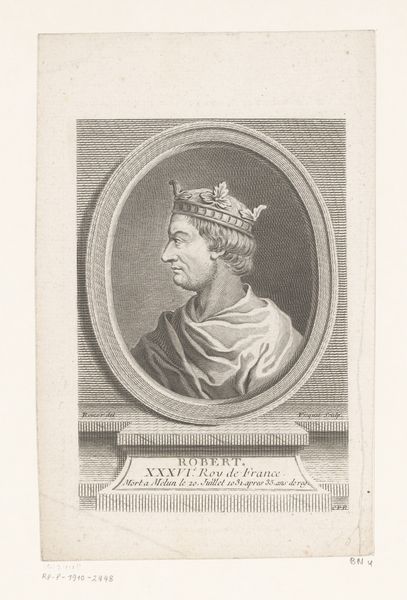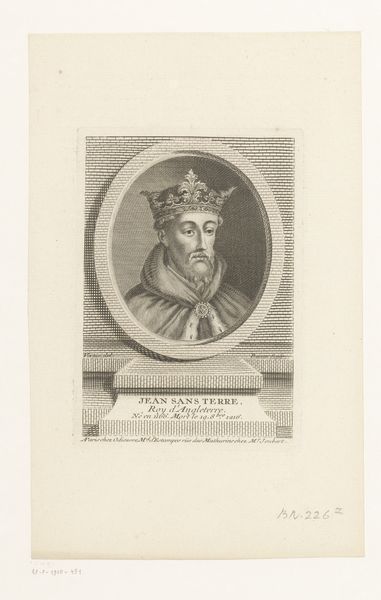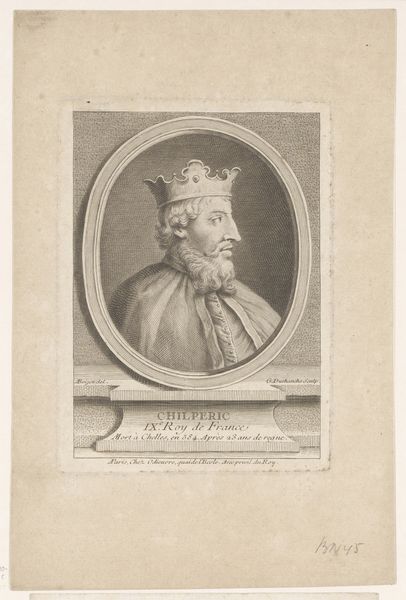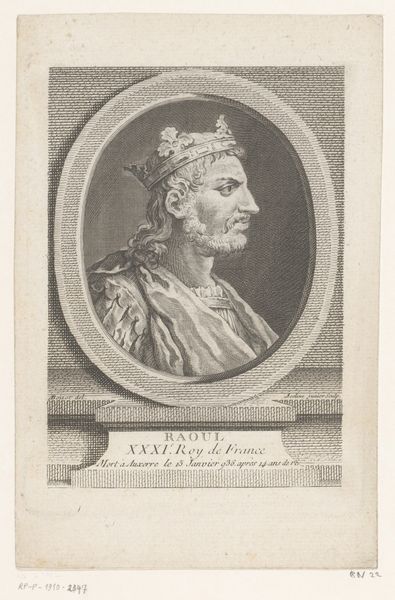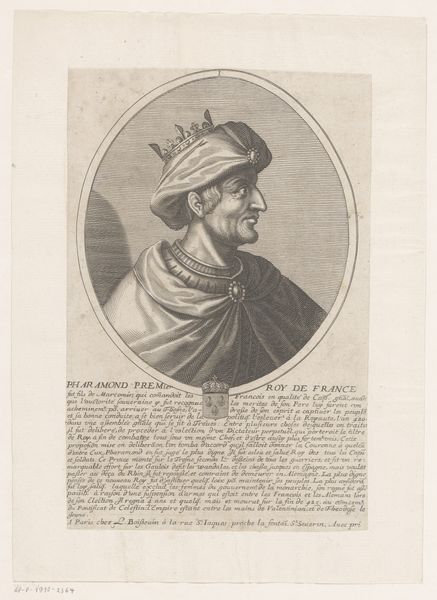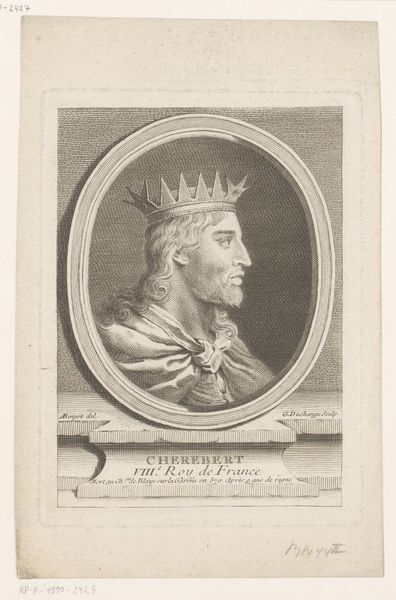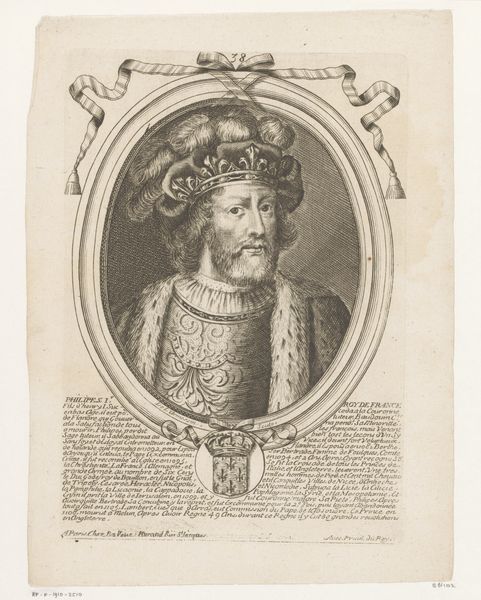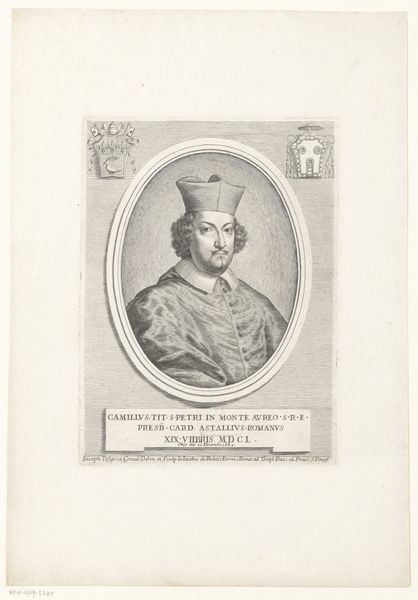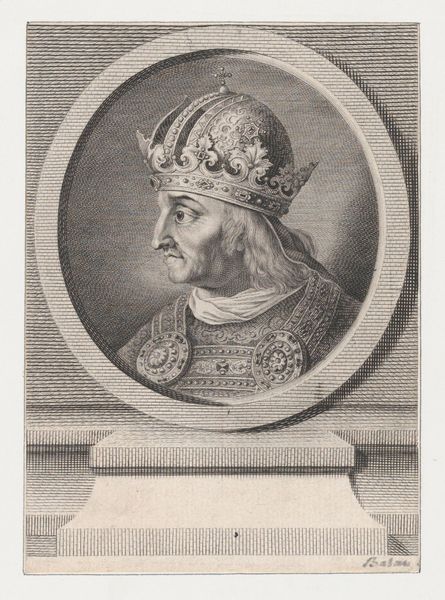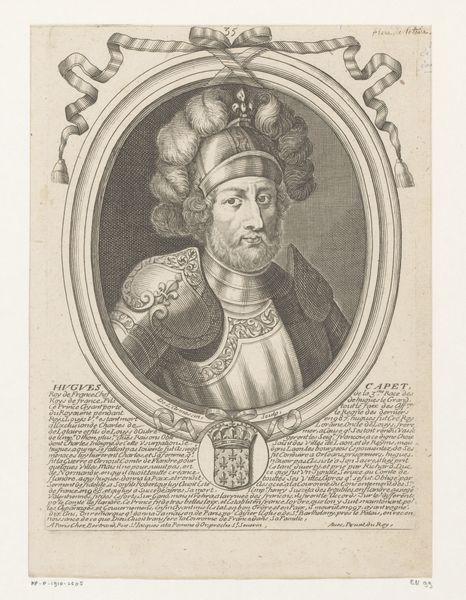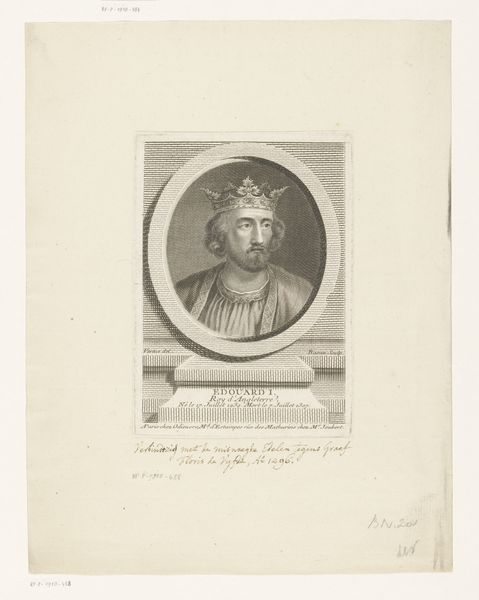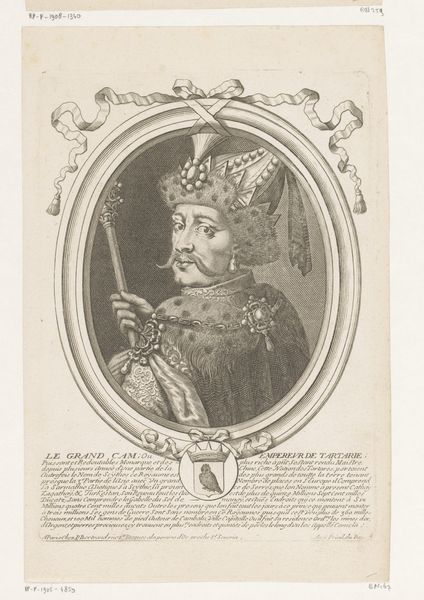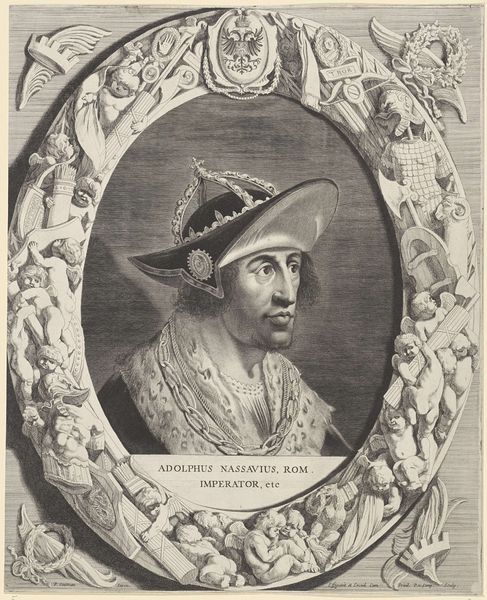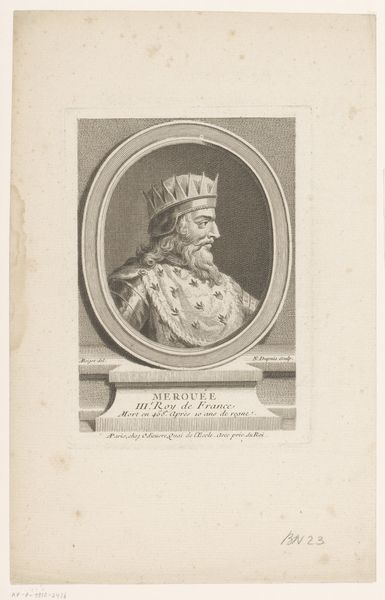
print, etching, paper, engraving
#
portrait
#
baroque
# print
#
etching
#
figuration
#
paper
#
form
#
line
#
history-painting
#
engraving
Dimensions: height 149 mm, width 105 mm
Copyright: Rijks Museum: Open Domain
Editor: We're looking at a print of *Portret van Lodewijk VII*, made in 1742 by Etienne Ficquet. It's an etching and engraving on paper, displayed here at the Rijksmuseum. I'm struck by the fine lines that create such detail in his face and clothing. What do you notice first? Curator: The use of line is indeed paramount. Observe how Ficquet employs varied densities and directions to delineate form and texture. Consider, for example, the cross-hatching technique that models the contours of Louis VII's face, achieving a palpable sense of depth. Do you perceive how the artist uses contrasting light and shadow to define the planes of the face and the folds of the drapery? Editor: Yes, now that you point it out, the shadows really give him dimension. And the oval frame around the portrait, is that just decorative, or does it serve a function in the overall composition? Curator: The ovoid shape acts as a formal device, isolating the king’s likeness and concentrating the viewer's attention. It contributes to the visual hierarchy, further emphasized by the inscription below. Moreover, the sharp angles of the inscription panel contrast against the curves of the portrait, heightening the drama. It begs the question – what would be lost if that frame were absent? Editor: That's a perspective I hadn't considered before. I was so focused on the subject matter that I hadn’t really analysed how the print functions as a visual object. Curator: Precisely. By attending to the formal elements, we can access layers of meaning that may have otherwise remained unseen. Editor: Thank you! Thinking about the form and technique helps me better understand the work. Curator: It is through sustained scrutiny that art reveals its complexities.
Comments
No comments
Be the first to comment and join the conversation on the ultimate creative platform.
